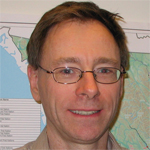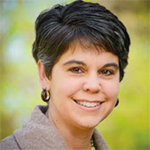
As I recently told a new member, there is something special about the ACR that I have found lacking in other groups.
I have been a member since 1987, and the nice part of having a 20-year history is that one can look back and review the road traveled and the quality of the trip. As Mark Twain noted, “Broad, wholesome, charitable views of men and things cannot be acquired by vegetating in one little corner of the earth all one’s lifetime.”
Over the past two decades, it has been my privilege to work on many ACR committees, serve as the ARHP president, and contribute to the ACR Research and Education Foundation. Drawing from my travels through the ACR structure, I would like to share some of our most interesting trips, talk about the benefits of having the ARHP in the car, and look at what’s down the road.
It can be difficult for health professionals to be heard, have their needs recognized as important, and obtain the majority vote in favor of a minority position.
Small Beginnings
When I started in the ACR, the entire annual meeting had roughly one-tenth the number of its current participants. If you didn’t know everyone at the onset, by the end of the opening reception you had a good sense of where your colleagues came from—and were on a first-name basis with many.
The rheumatology world then felt like a small town where several roads led to a common destination. The townspeople had a common interest in rheumatology care but many personal interests as well. ACR gave us a professional arena to learn, change, and interact for the common good. It was easy to maintain community ties in our regions and with our patients. It was easy to encourage our fellow ACR members to expand their own careers and share their knowledge and experience.
The ARHP involvement in rheumatology goes back at least few generations. As a professional group, it started in 1966 as a section of the Arthritis Foundation, which has been focusing energy and resources on fighting rheumatic diseases since 1948. In 1985, the ACR was formed from the physician group within the Arthritis Foundation. Similarly, in 1994 the health professionals formed the ARHP as a division of the ACR.
Synergistic Society
ARHP and ACR have a synergistic relationship, mirrored in the clinical and research communities: We bring together the talents of many diverse professionals to enhance education, research, and advocacy efforts for patients with rheumatic diseases.
As with any multifaceted group, there are benefits and challenges. One challenge for the ARHP is having a minority voice in ACR. It can be difficult for health professionals to be heard, have their needs recognized as important, and obtain the majority vote in favor of a minority position.
On most days, though, physicians and health professionals work together to provide patients with the best care, and the greatest continuity of care. One thing ARHP brings to ACR is diversity of expertise. Members include RNs, clinical trial nurses, doctorally prepared nurses, advanced practice nurses, OTs, PTs, psychologists, social workers, epidemiologists, and scientists—at all different levels of training and experience.
As an epidemiologist who is most comfortable looking at risk factors and disease patterns, I take great delight in speaking with my ACR/ARHP colleagues about scleroderma or pediatric physical therapy for juvenile RA or the possibility of foot deformities with certain diseases. Having access to varied expertise leads to better research and patient care, as well as encouraging collaborations for comprehensive studies.
Integrating multiple disciplines dissipates turf battles, as everyone works collectively toward the common goal of maximizing the wellbeing of patients with rheumatic diseases. Interprofessional collaborations have improved the understanding of rheumatic diseases and patient care, achievements demonstrated most notably by the advances presented at each annual scientific meeting.
By drawing on so many diverse and talented professionals, the ACR can speak knowledgeably from a provider team perspective on the best ways for patients to access care and for providers to integrate the latest innovations in rheumatology care into their practices. Also, the organization can help basic bench scientists effectively communicate their work to clinical investigators who may continue this work in patient populations, leading to medical interventions that benefit patients.
ARHP is fully integrated into ACR, with ARHP members on ACR committees and physician ACR members on the health professional committees, encouraging collaboration and integrated educational efforts. ARHP has a seat at the table for generating policies and setting the future agenda for ACR. Benefits of this partnership include the combined clinical symposia and a combined abstracts session at each annual scientific meeting. The collaboration of physician, researcher, and health professional at these focused sessions enriches the educational experience and expands questions and debates beyond each individual’s usual way of thinking. The end result is greater than the sum of the parts and fosters further growth.
Growth of a Community
By almost any metric, ACR and ARHP have enjoyed tremendous growth in both clinical and research members, especially over the past few years. The ACR has an increasing number of international members representing more than 20 countries. The annual scientific meeting continues to have outstanding sessions and workshops, record-high attendance, and highly scored abstracts submissions. Each year, the most current research available is presented at our rheumatology meeting.
The editors of the ACR journals, Arthritis & Rheumatism and Arthritis Care & Research, deserve congratulations for their success and for encouraging important clinical work as well as basic scientific efforts. The ACR published its Clinical Care in the Rheumatic Diseases textbook in 1998, and the text is now used in more than 20 different training programs. The third edition of Clinical Care debuted at our annual meeting.
Road Ahead
Both ARHP and ACR need to look to the future of the organization and of rheumatology. We are exploring educational teleconferencing and alternative media for educational opportunities; to support this we are developing our Web site and expanding hosting capabilities.
How do we create continuity and use the roadmap to get to our future destinations? We established a structure of committees that will ensure that the College survives and thrives and looks to the interprofessional future while still asserting our presence today. Another source of continuity and one of the major assets of ACR/ARHP is the annual meeting. In my experience, it is also a source of research ideas that get funded. The ACR must continue to provide superb patient education and care, expand research endeavors, and advocate for the best in rheumatologic patient care.
For the past 20 years I have seen our organization grow. Serving on many committees and in many roles has allowed me to look closely at the work of ACR and the division of ARHP—the research, training, spirit of our members, and most of all, the care given to our patients. It has been an extremely inspiring two decades. We inverted the pyramid, added biologics, encouraged exercise, collaborated in our treatment regimens, expanded our provider base, and improved our practice patterns.
ACR’s commitment to rheumatology remains strong. The organization is evolving and bringing in new members. We are proving that you can have the best of both worlds—a strong sense of tradition coupled with new innovations. Some of the steps we take to achieve our future goals will be new, daunting, and groundbreaking—one is having ARHP and ACR work more closely together, recognizing each other’s strengths.
Something Special
While working within a predominantly physician-oriented group is sometimes challenging, there is something special and different about the ACR. It is meeting colleagues outside your discipline-specific organization. It is the patient focus that encourages professional growth and asking questions. It is the blend of clinical and research insights put forth each year. It is the interaction with colleagues across many spectrums, whether pediatrics, biochemisty, nanotechnology, genetics, or informatics.
The ARHP adds value to the ARC, and each component of the College, whether ARHP, pediatrics, basic science, or clinicians, is able to stand on its own capable feet. The organization as a whole is carving away at the isolation of the specialist, and we anticipate the interface between ARHP, ACR, and other organizations to become even more important.
The writer Miriam Beard said: “Certainly, travel is more than the seeing of sights; it is a change that goes on, deep and permanent, in the ideas of living.” My 20-year-old ARHP roadmap is very worn and wrinkled but the trip has given me a wealth of knowledge. The advice I’ve received (and have given out) has taken me into many side adventures. I look forward to my next two decades in ACR, with anticipation of continued roadside assistance.
Dr. Hannan is associate professor of medicine at Harvard Medical School in Boston and past president of ARHP.


